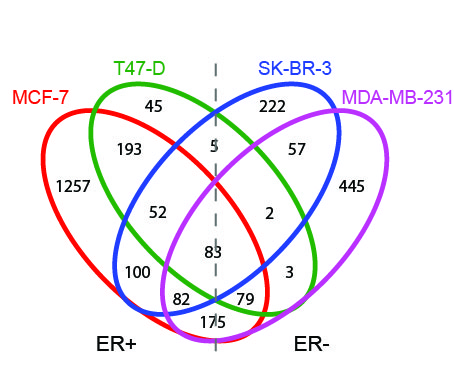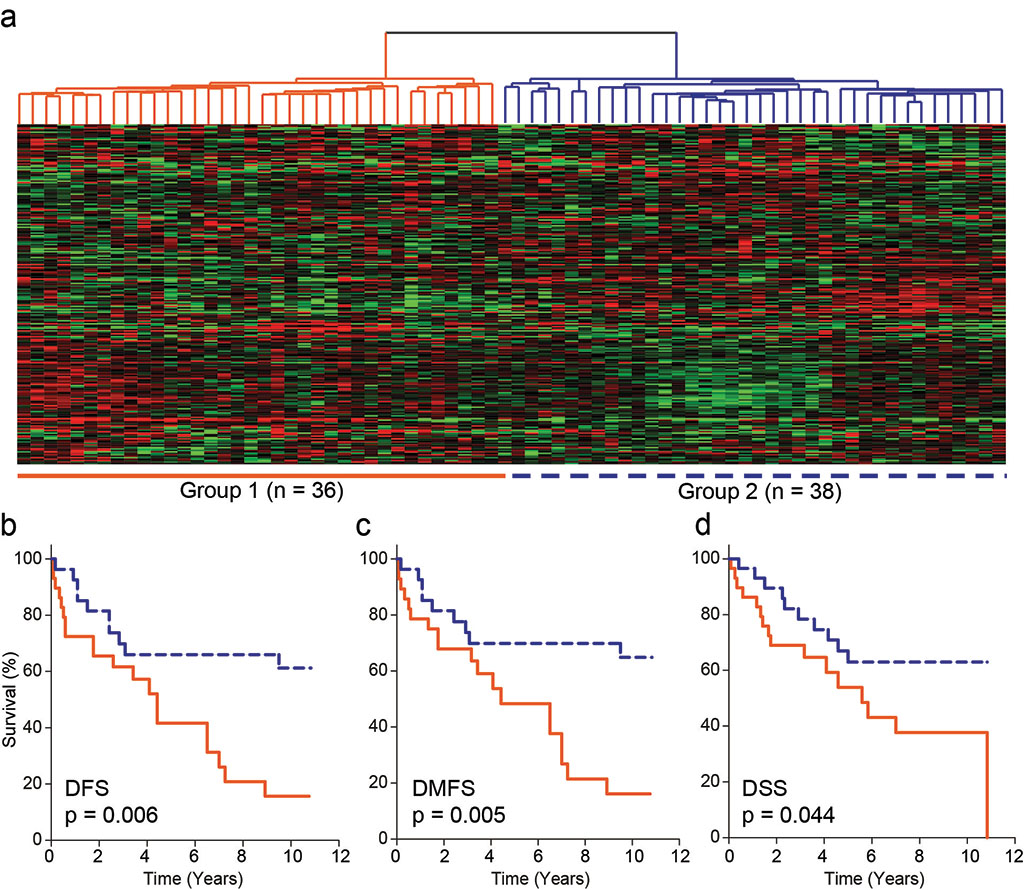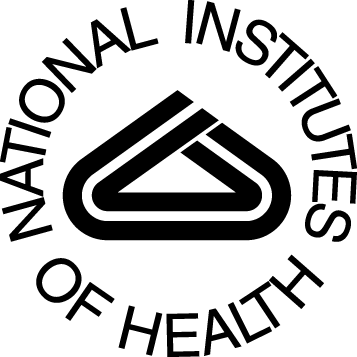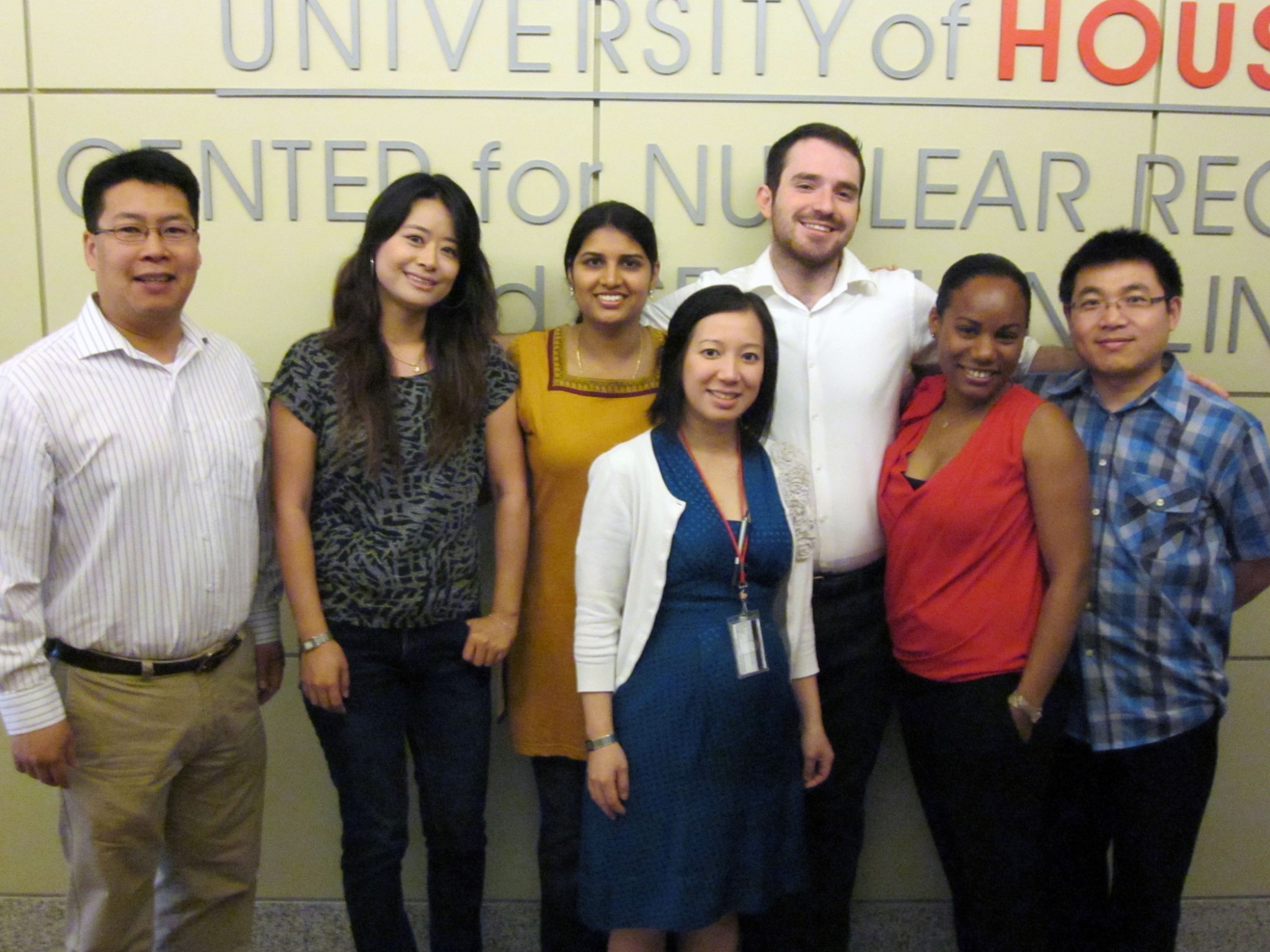Lin Lab
Chin-Yo Lin, Ph.D.
Associate Professor
Department of Biology and Biochemistry
Office: SERC, 3023
Contact: clin23@central.uh.edu - 832-842-8182
Nuclear receptors (NRs) play key roles in a number of developmental and physiological processes and endocrine-related human diseases. The objective of our research group is to increase our understanding of basic biological and disease mechanisms by integrating molecular, genetic, computational, and genomic approaches in our study of NR functions in cell and animal model systems and in clinical samples. Our goal is to translate the findings from our studies into more effective strategies for disease prevention and treatment.
Mechanisms of Transcriptional Regulation by Estrogen Receptor Alpha

Estrogen receptor alpha (ERalpha) is a member of the nuclear receptor family of ligand-dependent transcription factors and regulates expression of target genes through interactions with co-regulators, the transcriptional machinery, and cis-regulatory regions of target genes. The majority of the research efforts in this field have focused on the role of ERalpha in activating target gene transcription, including studies characterizing the effects of SERMs and phytoestrogens, compounds with demonstrated or potential efficacy in the prevention and treatment of breast cancer. Recently published microarray studies and whole-genome ERalpha binding site mapping experiments, including those carried out by our group, suggest that ERalpha can alternatively directly repress the expression of a significant subset of target genes. Relatively little is known regarding the mechanisms of transcriptional repression by ERalpha, although the data indicate that many genes are directly down-regulated following estrogen treatment. The effects of SERMs and phytoestrogens on repressed target gene expression and mechanisms of transcriptional repression by ERalpha are also unclear. We posit that transcriptional repression by ERalpha is mediated by three related mechanisms: 1) Interactions with repression-specific binding site motifs and transcription factors which potentiate ER for transcriptional repression. 2) Enhanced recruitment of co-repressors. 3) Disruption of co-activator binding and RNA polymerase II docking. Our studies indicate that ER does recruit co-repressor proteins to the cis-regulatory regions of repressed target genes and RNA polymerase II docking is disrupted in the promoter regions as well. We are currently studying the binding site sequence motifs and associated transcription factors involved in transcriptional repression and also the effects of SERMs and phytoestrogens on these mechanisms.
Nuclear Receptors in Human Cancers

An exciting prospect of genomics and genome medicine is the ability to capture the complexity and heterogeneity of human cancers, with the goal of ultimately providing effective and personalized preventative and therapeutic options. There are two key challenges, however, in fully exploiting the accumulating datasets for disease marker and target discovery: First, it is unclear from the descriptive nature of the studies whether the cataloged variations are part of oncogenic mechanisms or merely downstream effects associated with disease progression. Second, even if candidate markers and targets can be determined from additional analysis and experimentation, they may prove biologically or pharmacologically intractable for subsequent development and clinical application. A strategy for addressing these challenges and in prioritizing discovery efforts is to focus on genes or gene families which play key regulatory roles and are likely to function in disease mechanisms and also have demonstrated utility as clinical markers and drug targets. The nuclear receptor (NR) family of ligand-dependent transcription factors meets these criteria. NRs serve as important regulatory nodes for extra- and intracellular signals via their receptor functions, interactions with major signal transduction pathways, and transcriptional regulatory activities. The forty-eight human NR family members function in a number of cancer-related processes, including metabolism, inflammation, and cell proliferation, and their involvement in a variety of cancers, including gynecological and endocrine-related cancers, are well documented. Our group is currently leveraging the available genome-scale datasets and identifying and characterizing NR family members which may play novel roles in disease recurrence, metastasis, and progression in breast and ovarian cancers.
Funding




Chin-Yo Lin, Ph.D.
Associate Professor
Department of Biology and Biochemistry
University of Houston
Houston, Texas 77204-5001
Office: 3023 SERC
Phone: 832-842-8182
clin23@central.uh.edu
Chin-Yo came to the Center in the fall of 2010. He was previously an assistant professor in the Department of Microbiology and Molecular Biology at Brigham Young University (his alma mater) when he was recruited by Jan-Åke Gustafsson, a world renowned biomedical researcher and leader in the nuclear receptor field from the Karolinska Institute in Sweden, to join CNRCS. He received his post-doctoral training in cancer genomics at the Genome Institute of Singapore, under the guidance of Edison Liu, and his Ph.D. from Harvard University where he performed his thesis research on protein kinases in Ray Erikson's lab in the Department of Molecular and Cellular Biology.

Abhinav Bagchi
Graduate Student

Asitha Premaratne
Graduate Student
- Bajic, V.B., Tan, S.L., Chong, A., Tang, S., Strom, A., Gustafsson, J.- Å., Lin, C.-Y., and Liu, E.T. Dragon ERE Finder ver. 2.0: A tool for accurate detection of estrogen response elements in vertebrate genomes. Nucleic Acid Res 2003; 31(13):3605-07.
- Vega, V.B., Bangarusamy, D.K., Miller, L.D., Liu, E.T., and Lin, C.-Y. BEARR: Batch extraction and analysis of cis-regulatory regions. Nucleid Acid Res. 2004; 32 Web Server Issue: W257-60.
- *Lin, C.-Y., Strom, A., Vega, V.B., Kong, S.L., Thomsen J.S., Yeo, A.L., Doray, B., Chan, W.C., Bangarusamy, D.K., Tang, S., Chong, A., Bajic, V.B., Ramasamy, A., Vergara, L., Miller, L.D., Gustafsson, J.- Å., and Liu, E.T. Discovery of estrogen receptor a target genes and response elements in breast tumor cells. Genome Biology 2004; 5 (9):R66. *Designated as a Highly Accessed article by BioMed Central.
- Reid, G., Metivier, R., Lin, C.-Y., Ibberson, D., Denger, S., Brand, H., Liu, E.T., and Gannon, F. Multiple mechanisms induce transcriptional silencing of a subset of genes, including oestrogen receptor alpha, in response to deacetylase inhibition by valproic acid and trichostatin A. Oncogene 2005; 24 (31):4894-907.
- Hall, P., Ploner, A., Bjohle, J., Huang, F., Lin, C.-Y., Liu, E.T., Miller, L.D., Pawitan, Y., Shaw, P., Skoog, L., Smeds, J., Wedren, S, Ohd, J., and Bergh, J. Postmenopausal hormone replacement therapy represses gene expression in human breast cancer. BMC Med. 2006; 4:16.
- Frasor, J., Chang, E., Komm, B., Lin, C.-Y., Liu, E.T., Miller, L.D., Bergh, J., Smeds, J., and Katzenellenbogen, B.S. Gene expression preferentially regulated by Tamoxifen in breast cancer cells and correlations with clinical response. Cancer Res. 2006; Jul 15; 66(14):7334-40.
- Su, X., Lin, C.-Y.; O'Shea, S. J., Teh, H. F., Peh, W. Y. X., and Thomsen, J. S. Combinational Application of Surface Plasmon Resonance Spectroscopy and Quartz Crystal Microbalance for Studying Nuclear Hormone Receptor-Response Element Interactions. Anal. Chem. 2006; Aug 1;78(15):5552-8.
- *Vega, V.B., *Lin, C.-Y., Lai, K.S., Kong, S.L., Xie, M., Su, X., The, H.F., Thomsen, J.S., Yeo, A.L., Sung, W.K., Bourque, G., Liu, E.T. Multi-platform genome-wide identification and modeling of functional human estrogen receptor binding sites. Genome Biol. 2006;7(9):R82. *Shared first authorship and designated as a Highly Accessed article by BioMed Central.
- Nilsson, M, Stulnig, T.M., Lin C.-Y., Yeo, A.L., Nowotny, P., Liu, E.T., and Steffensen, K.R. Liver X receptors regulate adrenal steroidogenesis and hypothalamic-pituitary-adrenal feedback. Mol. Endo., 2007; 21(1):126-137.
- *Lin, C.-Y., Strom, A., Kong, S.L., Kietz, S., Thomsen, J.S., Tee, J.B.S., Vega, V.B., Miller, L.D., Johanna Smeds, Jonas Bergh, Gustafsson, J.- Å., and Liu, E.T. Inhibitory effects of estrogen receptor beta on specific hormone-responsive gene expression and association with disease outcome in primary breast cancer. Breast Cancer Res., 2007; 9(2):R25. *Designated as a Highly Accessed article by BioMed Central.
- *Lin, C.-Y., *Vega, V.B., Thomsen, J.S., Zhang, T., Kong, S.L., Xie, M., Chiu, K.P., Lipovich, L., Barnett, D.H., Stossi, F., Yeo, A., George, J., Kuznetsov, V.A., Lee, Y.K., Charn, T.H., Palanisamy, N., Cheung, E., Katzenellenbogen, B.S., Miller, L.D., Ruan, Y., Bourque, G., Wei, C.L., and Liu, E.T. Whole-genome Cartography of Estrogen Receptor a Binding Sites. PLOS Genetics 2007, 3(6):e87. *Shared first authorship.
- Denger, S., Bahr-Ivacevic, T., Brand, H., Reid, G., Blake, J., Seifert, M., Lin, C.-Y., May, K., Benes, V., Liu, E.T., and Gannon, F. Transcriptome profiling of estrogen-regulated genes in human primary osteoblasts reveals an osteoblast specific regulation of the IGFBP4 gene. Mol. Endo. 2008, 22(2):361-79.
- Barnett, D.H., Sheng, S., Charn, T.-H., Waheed, A, Sly, W.S., Lin, C.-Y., Liu, E.T., and Katzenellenbogen, B.S. Estrogen Receptor Regulation of the Carbonic Anhydrase XII (CA12) Gene Through a Distal Enhancer. Cancer Res. 2008, 68(9):3505-15.
- Müller, P., Merrell, K.W., Crofts, J.D., Ronnlund, C., Lin, C.-Y., Gustafsson, J.-Å., and Ström, A. Estrogen-dependent downregulation of HES-1 gene expression in breast cancer cells is mediated via a 3 distal element. J. Endo. 2009, 200(3):311-19.
- Müller, P.,Crofts, J.D., Newman, B.S., Bridgewater, L.C., Lin, C.-Y., Gustafsson, J.-Å., and Ström, A. SOX9 mediates the retinoic acid-induced HES-1 gene expression in human breast cancer cells. Breast Can. Res. Treat. 2009, Mar. 26, [Epub ahead of print].
- Frasor, J., Weaver, A., Pradhan, M., Dai, Y., Miller, L.D., Lin, C.-Y., Stanculescu, A. and Positive Crosstalk between Estrogen Receptor and NF-kB in Breast Cancer. Cancer Res. 2009, 69(23):8918-25.
- Lipovich, L., Johnson, R., and Lin C.-Y. MacroRNA underdogs in a microRNA world: Evolutionary, regulatory, and biomedical significance of mammalian long non-protein-coding RNA. Biochim. Biophys. Acta 2010, 1799(9)597-615.
- Merrell, K.W., Crofts, J.D., Smith, R.L., Sin, J.H., Kmetzsch, K.E., Merrell, A., Miguel, R.O., Candelaria, N.R., and Lin., C.-Y. Differential recruitment of nuclear receptor co-regulators in ligand-dependent transcriptional repression by estrogen receptor alpha. Oncogene 2011, 30(13):1608-14.
- Lam, S.H., Lee, S.G.P. , Lin., C.-Y., Thomsen, J.S., Fu, P.Y., Murthy, K.R.K, Haixia Li, H., Govindarajan, K.R., Ho, L.C.N., Bourque, G., Gong, Z., Lufkin, T., Liu, E.T., Mathavan, S. Molecular conservation of estrogen-response associated with cell cycle regulation, hormonal carcinogenesis and cancer in zebrafish and human cancer cell lines. BMC Med. Genomics. 2011, 4:41.